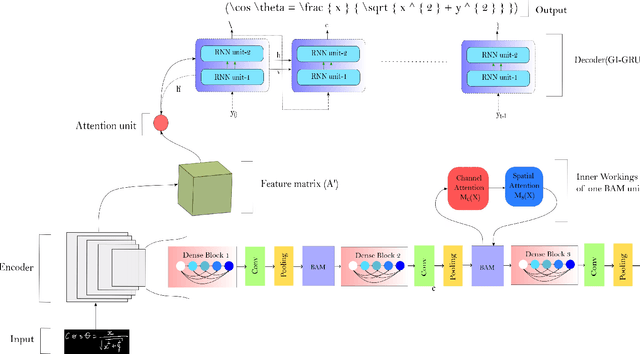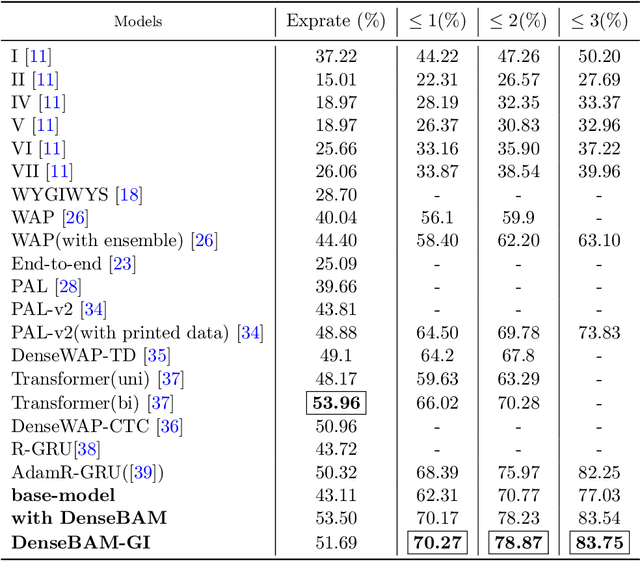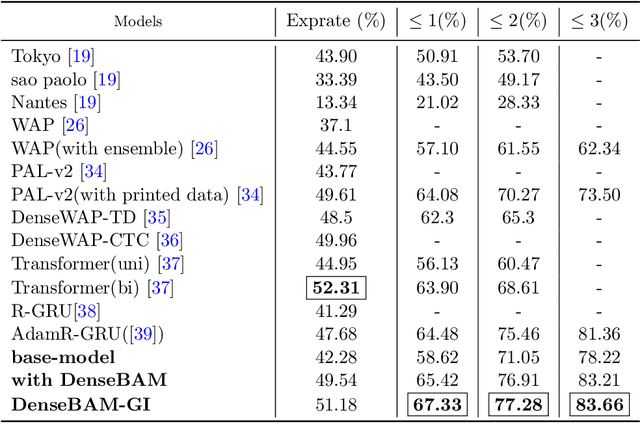DenseBAM-GI: Attention Augmented DeneseNet with momentum aided GRU for HMER
Paper and Code
Jun 28, 2023



The task of recognising Handwritten Mathematical Expressions (HMER) is crucial in the fields of digital education and scholarly research. However, it is difficult to accurately determine the length and complex spatial relationships among symbols in handwritten mathematical expressions. In this study, we present a novel encoder-decoder architecture (DenseBAM-GI) for HMER, where the encoder has a Bottleneck Attention Module (BAM) to improve feature representation and the decoder has a Gated Input-GRU (GI-GRU) unit with an extra gate to make decoding long and complex expressions easier. The proposed model is an efficient and lightweight architecture with performance equivalent to state-of-the-art models in terms of Expression Recognition Rate (exprate). It also performs better in terms of top 1, 2, and 3 error accuracy across the CROHME 2014, 2016, and 2019 datasets. DenseBAM-GI achieves the best exprate among all models on the CROHME 2019 dataset. Importantly, these successes are accomplished with a drop in the complexity of the calculation and a reduction in the need for GPU memory.
 Add to Chrome
Add to Chrome Add to Firefox
Add to Firefox Add to Edge
Add to Edge